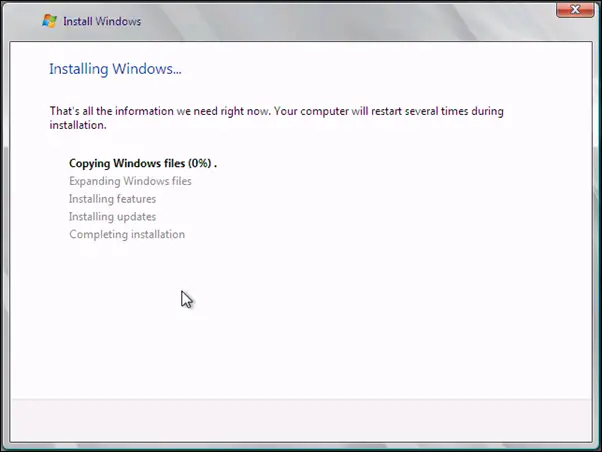How To Install Cab File Windows Server 2008 R2
Beginning with Windows Installer 5.0 running on Windows 7 or Windows Server 2008 R2 the installer saves any cabinets that are embedded in the.msi file before caching the installation package. Windows Installer 4.5 or earlier: To conserve disk space, the installer always removes any cabinets that are embedded in the.msi file before caching the installation package on the user's computer. Windows Server 2008 R2; Windows 2008 r2 Temp files? Latest Threads. 'The CAB-xxxx files that you see in the C: Windows Temp folder are some temporary files created by different Windows Operations, like installing Updates. You can safely delete these files off from that folder.
Prior to Windows 2008 and Vista software updates delivered through SMS/SCCM would come down in the form of .exe files and be stored in the client cache. 1998 merlin. During patch troubleshooting one option might be to attempt to run the patch directly, from the cache.
With Windows 2008 and Vista updates now come down as .cab files and if you double click them to attempt a manual install you will end up just opening the cab to display the packaged content. And, none of the files in the packaged content have an extension that appears to be actionable.
If you download updates for Windows 2008 and Vista manually - outside of SCCM - they will come down in the form of a .msu file. This .msu file is really just a wrapper around the packaged cab file that is downloaded through SCCM and is the standard update file for Windows 2008. Take a look at <http://support.microsoft.com/kb/934307/en-US> for detail on how the msu works.
Whether you choose to use the .msu file or to install the .cab that is downloaded by SCCM manually the process that handles the update install in Windows 2008/Vista is pkgmgr. With the .msu you can just double click and the install happens as you would expect. If you want to manually install the SCCM downloaded cab file you will have to execute a command line. When you run the command line the files within the cab will be extracted to the path specified for the cab so be sure you are OK having the files extracted there - in my testing, the files remained after being extracted. A sample command line is below. In my testing the comand line required the quotation marks as shown. Others have seen patches where the quotation marks caused errors - one of the two methods should work for you.
Start /w pkgmgr /ip /m:”c:tempWindows6.0-KB958687-x64.cab”
Of course, installing patches manually is not optimum - our goal should be a patching cycle that just runs without all of the work to fix the one off failures. But, if needed, the above will work.
Windows Server 2008 Setup
How-To Geek Forums / Windows 8
I manually downloaded updates using the Microsoft Update Catalog.
All the updates I've downloaded was in .exe except for the MS Office 2013 updates and some driver updates.

How do I properly install the .cab files?
How To Install Server 2008
Win+X
Command Prompt(Admin)
Lets assume your file is myupdate.cab and is located in C:update
dism /online /add-package /packagepath:C:updatemyupdate.cab

It has been a while and I've tried other dism commands from forums but still none of them worked. I Still don't know how to install .cab files downloaded from the Microsoft update catalog.
Pleas help me..
Topic Closed
This topic has been closed to new replies.